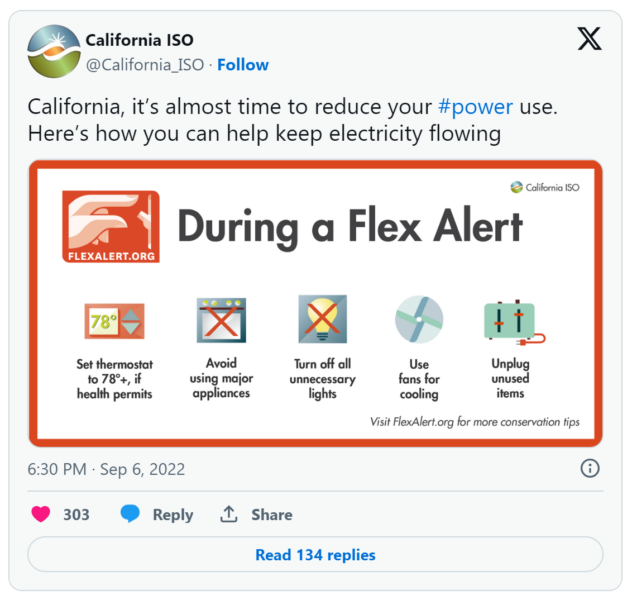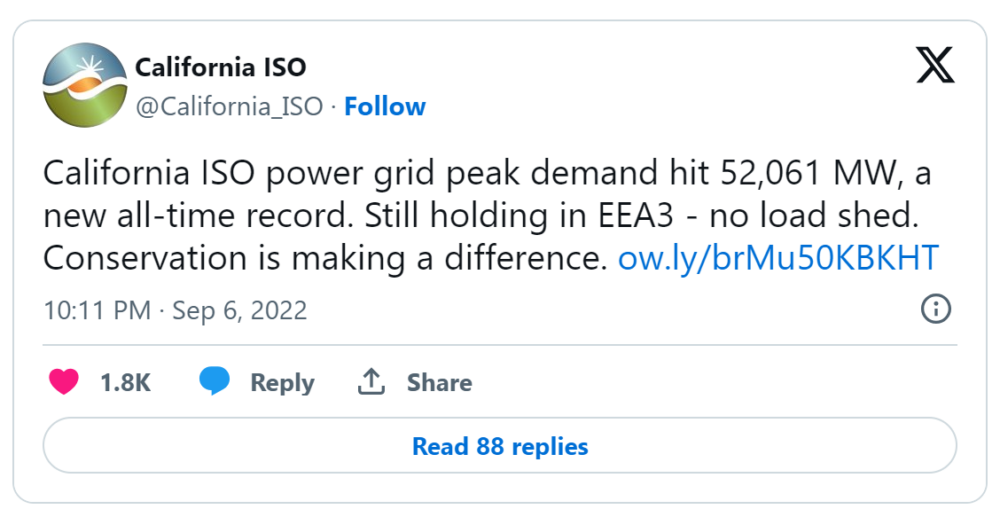Electricity grid operators often keep a wary eye towards the thermometer, particularly during the summertime danger season, as daily temperatures soar above 90 degree Fahrenheit and heat waves spread around the country.
And for good reason: extreme heat events cause a host of reliability issues for the grid. Electricity demand skyrockets with high temperature and humidity, sometimes outstripping available generation supply. Extreme heat conditions often impact the efficiency of power plants and transmission systems as well. The worst-case scenario may result in power outages, which can range from uncomfortable to deadly for the communities affected. And even the best-case scenario requires scrambling from utilities and operators to manage available resources, postpone scheduled maintenance to keep power plants online, and make last-minute purchases on the electricity market to meet demand.
All in all, extreme heat is a major concern for grid reliability and thus warrants the use of robust and transparent alert systems to warn plant and distribution operators (and in some cases, customers) about impending strain on electricity infrastructure.
The seven regional transmission organizations (RTOs) that manage about two-thirds of the country’s electricity each structure their alert system\ in a different way.
 Areas covered by the US’s seven regional transmission operators in the country and the uncovered areas. Source: Sustainable FERC Project.
Areas covered by the US’s seven regional transmission operators in the country and the uncovered areas. Source: Sustainable FERC Project.What customers see when the grid is strained
If you are located in the state of California, chances are you’ve received via email or text, or seen on the news report or highway billboard, what’s called a Flex Alert. Flex Alerts are one of the California Independent System Operator’s (CAISO) go-to methods for dealing with heat wave-induced pressure on the grid.
The agency’s executives cite Flex Alerts as critical in preventing outages in the state. These notifications are sent out to customers when electricity demand starts approaching heights that generation sources can’t quite keep up with, leading utilities to request customers turn down non-essential use for a short period of time. Although relatively small, the resulting reduction in electricity demand often prevents the grid operator from going into a crisis mode behind-the-scenes. The Flex Alert helps them avoid things such as last-minute scrambling to coordinate generation sources, postponement of scheduled plant maintenance, and, in worst case scenarios, rotating power outages.
The Electric Reliability Council of Texas (ERCOT) is the RTO serving most of Texas. It employs a similar method: sending out appeals for energy conservation through the public news media during times of extreme heat.
CAISO and ERCOT are two of the few agencies that issue customer-facing, RTO-level alerts related to extreme heat events, in addition to notification procedures they use with their operators. Other RTOs rely primarily on notification schemes that alerting plant and distribution operators of concerning events, keeping the impetus to act out of consumers’ hands.
During a heat wave, and outside of the customer’s field of vision, here’s what happens on the back end of the grid.
Behind the scenes during a heat wave
There are multiple levels of reliability alerts intended for a variety of stakeholders on both a regional and national scale. NERC, the North American Electricity Reliability Corporation, establishes reliability standards for the electricity sector across Canada and the US—these are called EEAs, or Energy Emergency Alerts. For a given region, the issuance of an EEA 1 indicates that all resources that can generate electricity are being used to meet current demand.
An EEA 2 is the next level up and it is used when a region is unable to meet its expected energy demand and must undertake load management procedures—such as notifying other regions of the emergency, further coordinating generation resources, and addressing any transmission constraints.
An EEA 3 is issued when a region is unable to meet its current energy demand and a power outage occurs.
Extreme heat events can often strain the electricity grid leading to EEAs, so most RTOs incorporate NERC’s EEA structure into their own alert systems. Some RTOs then flesh out their systems with greater specificity in alerts, specifically weather-related ones, while others stick to the basics.
 The Southwest Power Pool (SPP) uses a more specific alert system than NERC. Source: Southwest Power Pool.
The Southwest Power Pool (SPP) uses a more specific alert system than NERC. Source: Southwest Power Pool.Many RTOs have grid status alerts that specifically call out weather conditions. New England’s ISO-NE has a 3-tier alert system for cold weather conditions, while New York’s NYISO sticks to alerting for thunderstorms. SPP in the Southwest employs a more general ‘Weather Advisory’ category for severe weather.
Grid operators approach extreme heat differently across the country
Of the seven regional transmission operators, Midcontinent Independent System Operator (MISO) and Pennsylvania-New Jersey-Maryland Interconnection (PJM) are the only ones to specifically call out hot weather as an alert category of its own. In both regions, a “Hot Weather Alert” requires operators on the generation and transmission side of things to undertake enhanced reporting and coordination procedures. During these heat events, plant owners and other entities in the affected regions report updated fuel and resource availabilities to the RTO, review power outage plans, and defer scheduled maintenance of generation units when possible—ensuring that as much capacity stays online as possible.
In contrast, CAISO and ERCOT are both regions that do not have any sort of weather-specific alert system, sticking only to alerts that describe the condition of the grid. ERCOT issues different types of notices—Operational Information, Watch, and Operating Condition Notification (OCN). Within the description of a Watch or OCN, the reason for its issuance is typically described and may include extreme heat, but beyond that, weather is not its own category.
Similarly, CAISO issues a variety of emergency notifications: Restricted Maintenance Operations (RMOs), Transmission Emergencies, and EEA 1-3. Weather conditions and high temperatures are typically listed in the description of these notices, if they played a role, but are not classified as a separate alert on their own. Like the other RTOs, any emergency notice from CAISO or ERCOT triggers enhanced reporting and coordination procedures—plant owners postpone scheduled maintenance, coordinate the availability of generation units, and review outage plans as necessary. These behind-the-scenes actions are complemented by real-time responses from customers through the form of CAISO’s Flex Alerts and ERCOT’s appeals for energy conservation.
Not all grid operators reach out to customers
Neither MISO nor PJM’s Hot Weather Alerts require action from stakeholders besides utilities and other operating entities. This means that although these alerts are publicly available individual customers, households, or businesses are not the intended audience. However, customers can play an important part in reducing demand on the grid, including during high temperatures.
Demand-response initiatives, where customers are encouraged to decrease electricity demand during peak periods of use, are a common solution to balancing electricity supply and demand. Real-time customer response can be particularly useful during times of extreme heat, when increased demand from air-conditioning and cooling cause further strain on the grid.
For MISO and PJM, calling upon real-time customer response is not currently integrated with their Hot Weather Alert procedures. The alerts are meant only to prepare grid and plant operators for extreme heat conditions—thus focusing more on the supply side of the electricity reliability equation over demand. This is in contrast to RTOs like CAISO, where customer response to extreme heat-related alerts, and the resulting reduction in demand, is critical in maintaining the stability of the region’s electricity grid.
We must stay alert for the future
Across the US, heat waves are growing in both frequency and intensity as a result of climate change. More than 80% of this summer’s extreme heat events showed a clear climate signal, with the southwestern US in particular experiencing record-breaking temperatures that in some regions, lasted for weeks.
Such extreme weather conditions are already leading to greater reliability concerns and strain on our electricity grid. However, with robust alert and messaging systems regarding extreme heat, along with a smooth integration of both supply- and demand-side responses, operators and customers can work together to keep the lights on in all conditions.

 1 year ago
49
1 year ago
49
 Source:
Source:  Source:
Source: 